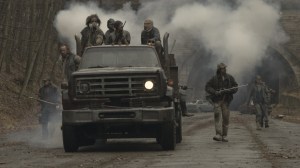
There is seemingly a consensus on what a serious superhero comic should look like. Characters will die without great fanfare. Batman, Superman, and other popular heroes will wear grimaces and bow their heads. Grave pronouncements about the tragic nature of being a superhero will arrive once every few pages. All of the pageantry and spectacle of a shared universe will be brought to half mast in order to show readers just how serious this subject is, even when it takes place in the world of superheroes.
Videos by ComicBook.com
Heroes in Crisis #1 looks like a serious superhero comic. The problem is that beneath all of its affectation, there is shockingly little substance in its approach to trauma.
The issue hinges on a shocking murder mystery, one that is bound to capture headlines, provoke fans, and draw out comparisons to the similarly serious miniseries Identity Crisis. That comparison is primarily superficial as Heroes in Crisis is focused on a very different set of ideas, albeit with familiar visual cues and dramatic tone. The first issue presents the gruesome inciting incident with enough blood and bodies to put an end to any hope that things are not quite as they seem, but the investigation of this scene is not the purpose of the issue. Instead, it lingers on the feeling around these murders and what makes them especially tragic, as much as any stack of corpses can be more tragic than another. It is in this lingering, voyeuristic approach to the horror of the moment that the debut begins to reveal just how little it has to say about the subject matter it evokes.

The issue is separated into two parts. While a pair of heroes from Sanctuary struggle with their memories of the incident, DC Comics’ most popular characters all explore the crime scene. As readers walk (or fly) with the likes of Superman, Batman, and Wonder Woman, the dead bodies of superheroes are slowly unveiled with plenty of details, including crows feeding on one and the tear-stained cheeks of another. These well-illustrated panels seem to only underline the point that death is a terrible thing that offers no redemption. Each individual tragedy is framed within the greater construct of Sanctuary, an idea that has been far better explored in marketing than this comic book. Here it is stated by the touring heroes to be a place for healing or rest, complete with robots designed to help troubled superheroes. This definition is vague, and there is little evidence of interest in a more nuanced interpretation. Sanctuary exists as a place to heal trauma like someone who has never seen a hospital might imagine it as a place with a bunch of steel contraptions and men in white coats. What is there to be said about the nature of trauma? How and why were Sanctuary important? These questions are not even brushed past; they do not exist in the text, and trauma is a label applied to simply make this sad scene even sadder.
Heroes in Crisis does have a long road ahead of it (recently announced to include two additional issues) and that does provide the opportunity for course correction. However, the debut issue provides no sound footing for good faith assumptions based on how it does approach its most contentious subject matter. Harley Quinn makes for an interesting choice to serve as a focal character in this context given the character’s strong ties to mental health and abuse. Her depiction in the issue is two-dimensional to a degree where it appears for the best that Sanctuary is made a cypher. She constantly lapses into bouts of mania, stabbing and singing her way through the plot without any clear purpose. It is a child’s conception of instability, and one that is awkwardly made to seem more complex by having the character collapse from laughter to tears in an aside. This ham-fisted approach to characters struggling with trauma is never more obvious in its poor presentation, but every bit as bad in more subtle ways both in the present and past narratives.

If there is a saving grace to be found in the pages of Heroes in Crisis, it is that Clay Mann‘s fine line work, well paired with Tomeu Morey, makes it easy to read the issue quickly and not consider what is actually being said in these pages. This is not simply another Batman adventure or cosmic spectacle though, and the narrative demands readers do more than appreciate individual panels and layouts for their craftsmanship. And the truth of comics is that they are a narrative medium where even a fine artist can be made to look bad when presenting a story that stumbles this badly.
Heroes in Crisis #1 is a hollow man of a comic. It presents the style of a well-crafted comic and calls out to greater ideas. Yet when any serious scrutiny is applied there is very little to be examined beyond the exterior. Trauma and suffering are deeply serious topics and ones that this issue is entirely unprepared to address, no matter what genre elements it calls upon in the process. There is simply nothing to be said, and the fine exterior seems to be draped upon a mannequin. Yes, there is a possibility that the series will improve as it continues and has a chance to interrogate its own premise, but there is nothing here to suggest that will occur in a meaningful fashion. Heroes in Crisis is far more engaged with the idea of seriousness than any ability to seriously interpret the world, and that makes the greatest tragedy of this comic the comic itself.
Published by DC Comics
On September 26, 2018
Written by Tom King
Art by Clay Mann
Colors by Tomeu Morey
Letters by Clayton Cowles








